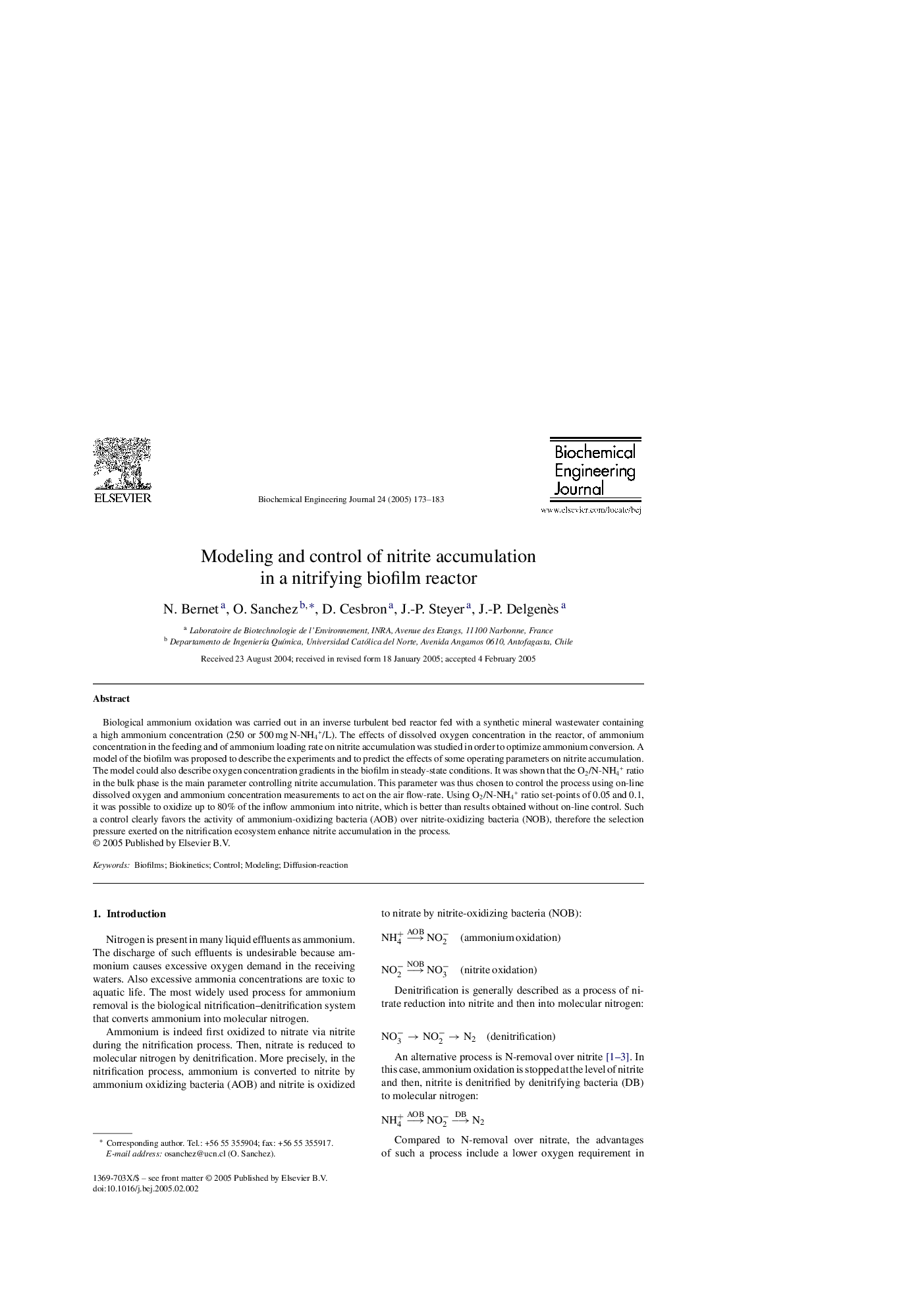| Article ID | Journal | Published Year | Pages | File Type |
|---|---|---|---|---|
| 10160665 | Biochemical Engineering Journal | 2005 | 11 Pages |
Abstract
Biological ammonium oxidation was carried out in an inverse turbulent bed reactor fed with a synthetic mineral wastewater containing a high ammonium concentration (250 or 500 mg N-NH4+/L). The effects of dissolved oxygen concentration in the reactor, of ammonium concentration in the feeding and of ammonium loading rate on nitrite accumulation was studied in order to optimize ammonium conversion. A model of the biofilm was proposed to describe the experiments and to predict the effects of some operating parameters on nitrite accumulation. The model could also describe oxygen concentration gradients in the biofilm in steady-state conditions. It was shown that the O2/N-NH4+ ratio in the bulk phase is the main parameter controlling nitrite accumulation. This parameter was thus chosen to control the process using on-line dissolved oxygen and ammonium concentration measurements to act on the air flow-rate. Using O2/N-NH4+ ratio set-points of 0.05 and 0.1, it was possible to oxidize up to 80% of the inflow ammonium into nitrite, which is better than results obtained without on-line control. Such a control clearly favors the activity of ammonium-oxidizing bacteria (AOB) over nitrite-oxidizing bacteria (NOB), therefore the selection pressure exerted on the nitrification ecosystem enhance nitrite accumulation in the process.
Related Topics
Physical Sciences and Engineering
Chemical Engineering
Bioengineering
Authors
N. Bernet, O. Sanchez, D. Cesbron, J.-P. Steyer, J.-P. Delgenès,
